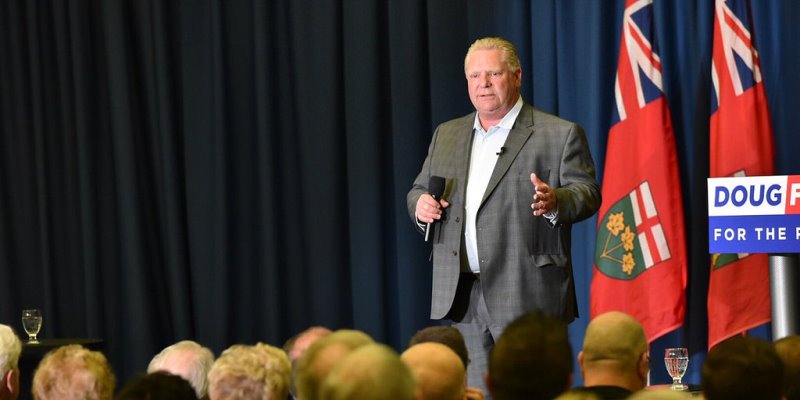Premier Ford should look west for deficit-reduction strategy

Last week, Alberta Premier Jason Kenney’s government tabled its first budget, which was also likely Alberta’s most consequential budget in 25 years.
Indeed, with its first budget, the Kenney government promised to introduce small but meaningful nominal spending reductions over the next four years to return to budget balance. Here in Ontario, as the government continues to develop a fiscal policy, Premier Doug Ford would do well to look west and learn some important lessons.
Alberta currently faces a daunting budget deficit, the result of years of spending growth and a brutal recession from which the province has not yet fully recovered. The deficit this year (the latest in a long string) is pegged to be 2.2 per cent as large as the provincial economy. Thanks to Alberta’s chronic string of large deficits, the province has racked up debt at an alarming pace.
Despite Alberta’s difficult circumstances, which include a 2014 oil-price drop, government finances have been characterized for years by a misplaced complacency. Provincial governments of all stripes kept increasing spending, hoping for resource revenues to rebound and save the day. That all came to an end last week with the Kenney budget, which finally acknowledged fiscal reality and vowed to stop increasing nominal spending—at least until the budget is balanced—with a 1.6 per cent reduction in nominal spending over four years.
That might not sound like much, but given upward pressure from population growth and inflation, it’s no simple trick to reduce nominal spending over time. And the Ford government’s failure to do just that—reduce nominal spending—has been the fundamental flaw in its deficit-reduction strategy.
Despite sharp rhetorical differences on the campaign trail, in reality the Ford government’s approach to spending closely mirrors the plan of the Wynne government throughout most of its term in office. Premier Wynne’s strategy was to reduce the deficit over time by holding spending growth down slightly and hoping for revenue to gradually close the gap. Unfortunately, the plan didn’t work, the deficit was never eliminated, and Ontario’s net debt soared.
Again, surprisingly to some, Premier Ford’s government has embraced this exact same strategy. His first budget called for continued nominal spending growth in coming years—while hoping there won’t be a recession and that government revenue gains over time will slowly eat away at the deficit. That’s why the Ford government’s plan takes five years (incidentally, taking the premier beyond his first mandate) to balance a much smaller deficit of 1.2 per cent of GDP whereas Premier Kenney’s plan eliminates Alberta’s nearly twice-as-large deficit (relative to the size of the economy) one year faster.
Much ink has been spilled in recent years about the apparent close friendship between Jason Kenney and Doug Ford. Hopefully the next time they get together they find time to talk a bit of shop, and Premier Ford can ask Premier Kenney for tips on how to finally stop the growth of nominal government spending and begin to reduce a large provincial budget deficit.
Author:
Subscribe to the Fraser Institute
Get the latest news from the Fraser Institute on the latest research studies, news and events.

